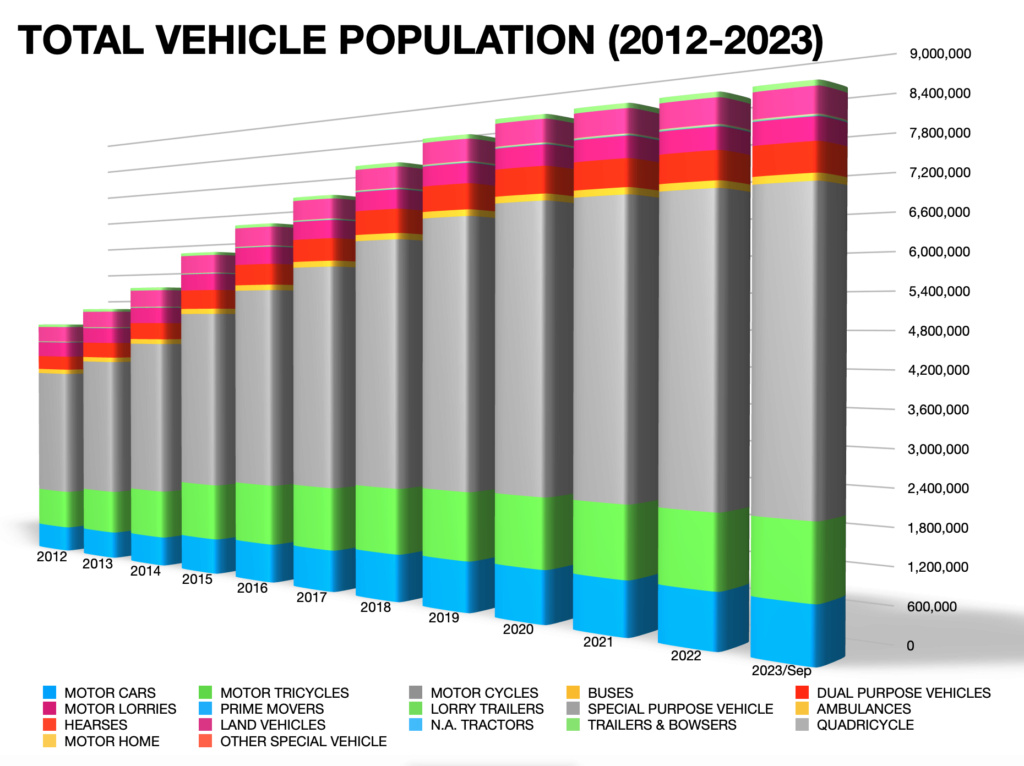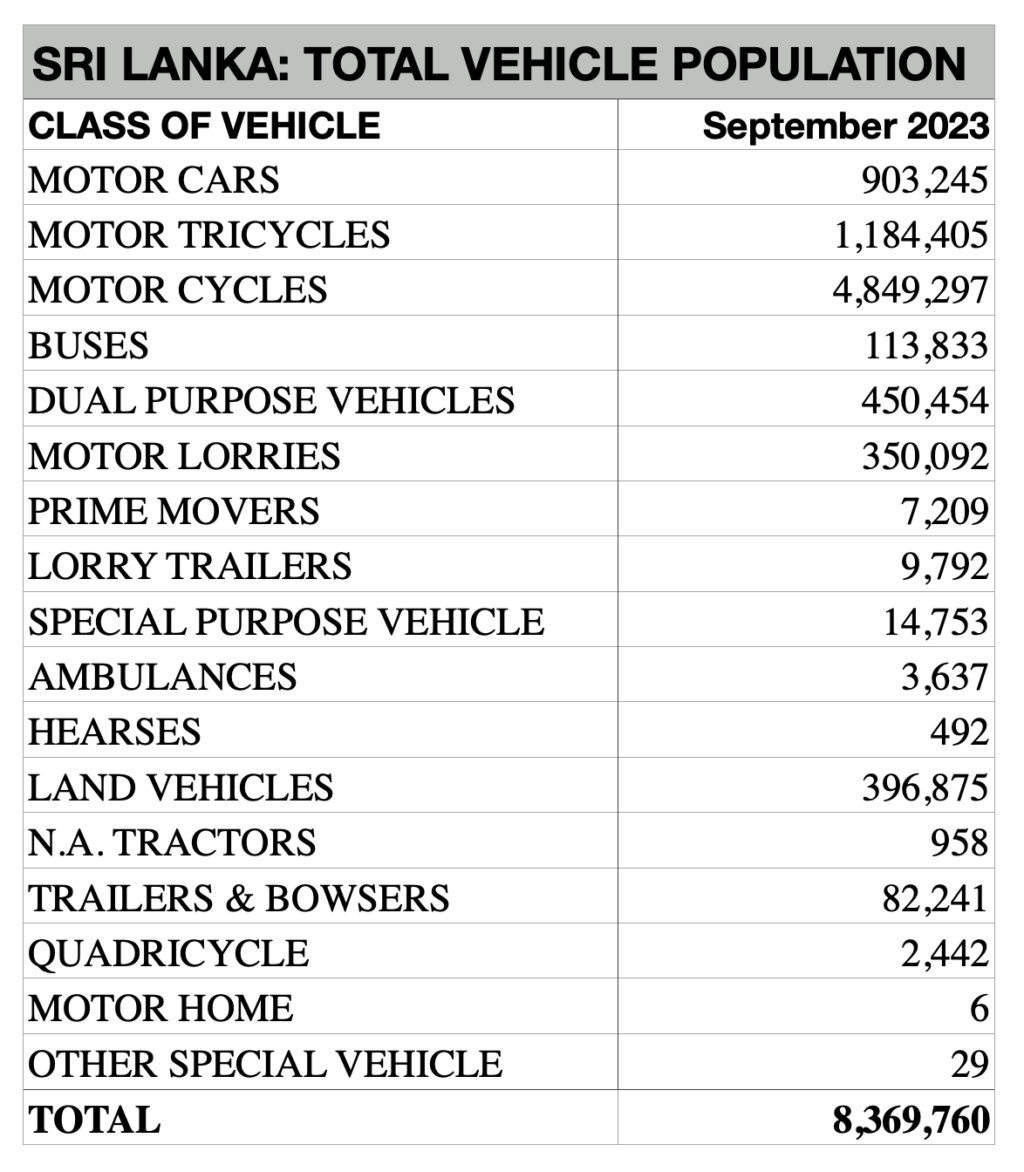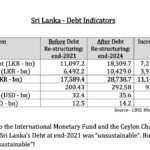- Unnecessary Stress on Foreign Reserves
Sri Lanka spent over $800 million annually on vehicle imports before the ban. Continuing the ban reduces this substantial drain on foreign reserves, allowing the country to manage its fragile forex situation. - Current Vehicle Population
As of 2023, the vehicle population is over 7.5 million, with adequate private and public vehicles to meet demand, mitigating the need for new imports. - Trade Deficit from Unnecessary Imports
Pre-ban, vehicle imports significantly contributed to Sri Lanka’s trade deficit, making up 15% of total imports in 2019. Avoiding such high expenditures is essential for economic stabilization. - Exchange Rate Pressure
Vehicle imports increase the demand for foreign currencies like the U.S. dollar. Sri Lanka’s Rupee, having depreciated over 80% during the 2022 crisis, cannot withstand further pressure. Continued restrictions on imports help to maintain the fragile exchange rate stability achieved so far. - Economic Recovery
By cutting non-essential imports like vehicles, Sri Lanka can focus its limited foreign reserves on critical sectors—such as energy and essential goods—key to the country’s economic recovery. The vehicle import ban has helped reduce imports by 20% in the first half of 2023, making it a necessary measure for continued fiscal discipline.
Maintaining the vehicle import ban offers a crucial buffer to ensure foreign reserves are preserved, the trade deficit remains in check, and economic recovery efforts are sustainable over the long term.
IMPORT RESTRICTION
The import ban on vehicles has been in place since 2020, a decision rolled out by the government to prevent the island nation from further losing foreign exchange. The move to relax small vehicle imports comes in the wake of limited revenue collection by Sri Lanka Customs, approximately falling short by Rs.300 billion-Rs.450 billion, on the backdrop of stringent revenue targets set by the International Monetary Fund.
Before the ban on vehicle imports, Sri Lanka had new vehicle registrations of over 350,000 annually. The majority was dominated by motorcycles, with over 280,000 registrations, followed by cars, with over 35,000 new registrations. New registrations of small car imports of less than 1,000CC amounted to 26,962 in 2019 and 64,195 in 2018.
Sri Lanka: Total Vehicle Population (2012-2023)
Sri Lanka vehicle population is a good indication to determine how country has used its foreign reserves to import vehicles for passenger transport and utility purposes instead of industrial or agricultural usage.


Sri Lanka: Total Vehicle Population as at September 2023


Source: Department of Motor Traffic
https://dmt.gov.lk/images/2023/total_population/Vehicle_Population_2010-2023.pdf
Sri Lanka New Car Registration during last 25 Years

Car Registrations in Sri Lanka decreased to 108 Units in November from 129 Units in October of 2023. Car Registrations in Sri Lanka averaged 2191 Units from 1997 until 2023, reaching an all time high of 15017 Units in September of 2015 and a record low of 41 Units in November of 2022. source: Central Bank of Sri Lanka















